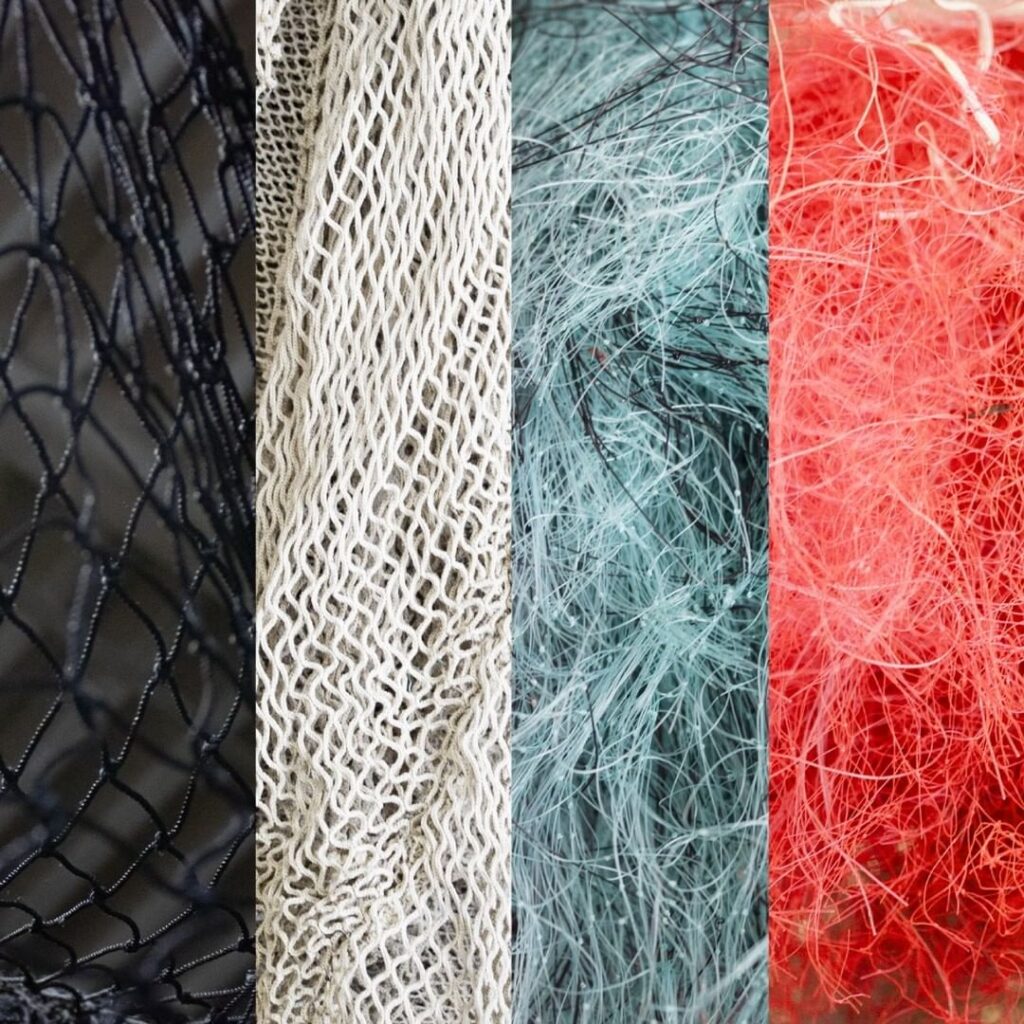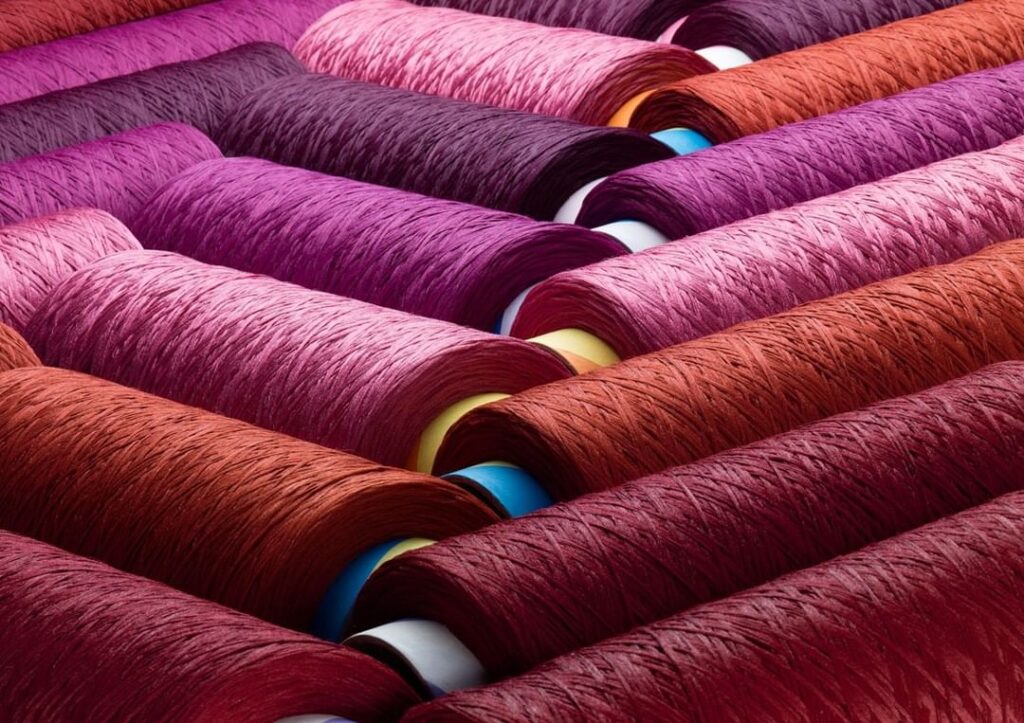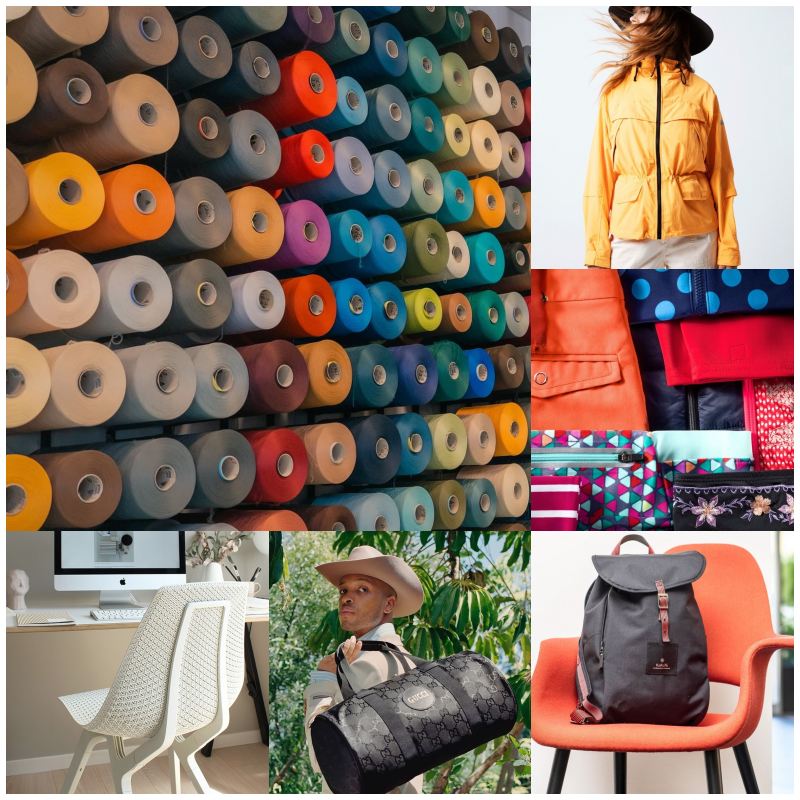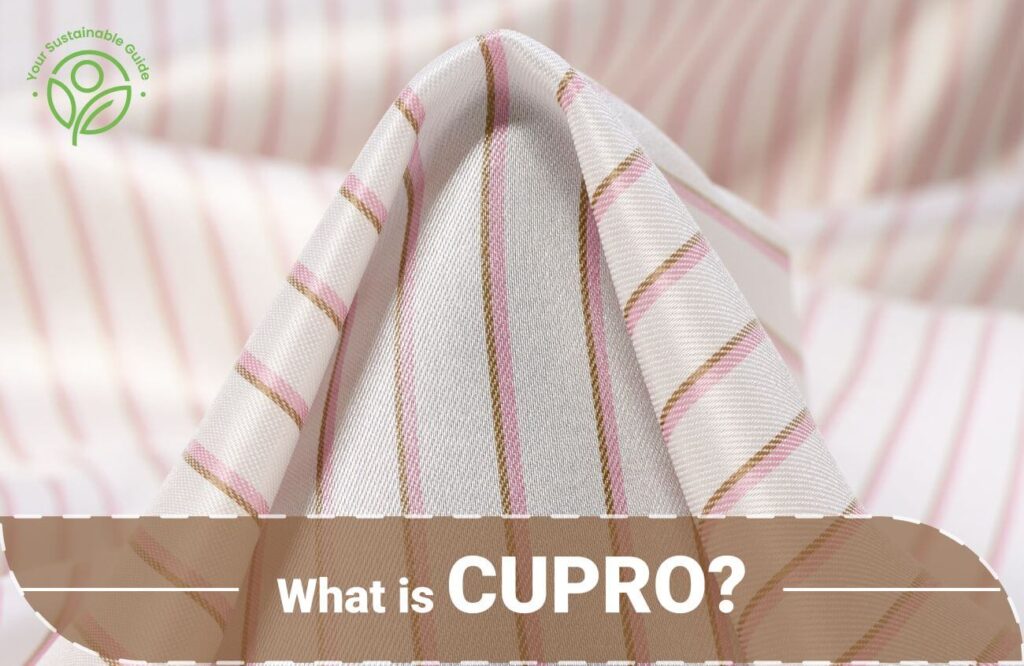Sustainable textiles have gained immense popularity in recent years. Natural or artificial, sustainable fabrics are created with one goal: to reduce the negative impact on the environment. High-end technology has played an enormous role in spinning up synthetic fibers from unconventional materials otherwise considered trash. We are all but praises for these efforts.
One such sustainable textile is the Econyl fabric- a type of recycled nylon. Made of abandoned fishing nets, single-use plastic bottles, and many such synthetic garbage dumped in the oceans, Econyl fabric is an iconic innovation of turning trash into treasure.

In the present world, fishing nets pose a huge threat to marine life. The nets left behind by fishermen trap and suffocate whales, dolphins, sharks, turtles, and other marine animals. However, clever and innovative technological developments like the Econyl fabric might be able to clean up a major portion of these nets and save our beautiful aquatic life. And now that we’ve stirred your curiosity, let’s deep dive to know more about this sustainable fabric Econyl.
- What is Econyl Fabric?
- Is Econyl Fabric Sustainable?
- Is Econyl Fabric Affordable?
- Econyl Fabric Certifications
- Properties of Econyl Fabric
- Pros & Cons of Econyl Fabric
- Uses of Econyl Fabric
- Can Econyl Completely Replace Nylon?
- How to Care for Econyl Fabric
- Famous Brands That Use Econyl Fabric
- Best Alternatives to Econyl Fabric
- Conclusion
What is Econyl Fabric?
Econyl is eco-friendly regenerated nylon made entirely from waste products like old fishing nets, industrial plastic waste, used carpets, and scraps of fabrics recovered from the oceans. Believed to be a greener alternative to traditional nylon, Econyl fabric is tough and can easily be woven into industrial textiles, garments, and everything in between.
Econyl fabric was first created in 2011, by the Italian textile manufacturer Aquafil. The company manufactures various textiles and industrial plastics, and now has also developed and owns the trademark of Econyl fabric.
Inspired by the havoc of the environmental crisis caused by synthetic fibers, the creators of Econyl fabric sought to devise an alternative to nylon that doesn’t harm ecosystems. Aquafil is the only producer of Econyl and has facilities scattered around parts of Italy, Thailand, China, and the U.S. state of Georgia.
Currently, there are two types of Econyl fibers: Econyl Textile Fiber- which has a softer attribute making it fit for weaving garments, and Econyl Carpet Fiber- which is rapidly replacing the traditional nylon used extensively in carpet manufacturing.
How is Econyl Fabric made?
Aquafil manufactures and develops Econyl in a closed-loop system. The Econyl production process starts with accumulating huge amounts of nylon waste discarded in the water bodies in the form of abandoned fishing nets, plastic waste, etc. This waste is then cleaned and subjected to a depolymerization process to redevelop the existing material into nylon yarn.
Since Econyl is made of regenerated nylon, fossil fuel consumption is not required, which is otherwise necessary for producing nylon polymer. In the depolymerization process, existing nylon polymer is converted into monomers before reconstituting them into polymers. This process is done to eliminate impurities from the present nylon yarn. Finally, this molten polymer is squeezed out through spinnerets and spun into yarn, followed by chemical treatment and dyeing, making it ready to be weaved into textiles.
Is Econyl Fabric Sustainable?
Yes, Econyl is a sustainable fabric. We mean turning trash into something fresh and new? Who would have thought about this method of garbage clean-up! Econyl is made of plastic pollutants gathered from waterways, seas, and oceans. This garbage majorly includes fishing nets which if not extracted from the oceans would end up floating endlessly, harming marine life.
Nylon is a broadly used fiber in making fishing nets because of its durability and affordability. But it is known to have a hazardous environmental impact because nylon production emits a toxic greenhouse gas of Nitrous Oxide, which is about 10 times stronger than Carbon Dioxide. Estimates say that for every 10,000 tonnes of Econyl produced, 70,000 barrels of crude oil are saved, reducing the impact of global warming by up to 90%.

With the invention of Econyl fabric, we are surely heading to a more sustainable future as nylon isn’t biodegradable. Still, Econyl is a friendly solution to recycle nylon products at the end of their life cycle. Econyl is a way to replace virgin nylon. With the invention of this fabric, Aquafil is set on a mission to reduce the negative impact of nylon on the planet by using it as recycled base material.
But Econyl is not fully biodegradable and while it is an amazing way of repurposing nylon waste, it doesn’t fully cure this toxic situation.
Is Econyl Fabric Affordable?
Yes, Econyl fabric is affordable. It is priced similar to or maybe a tad higher than virgin nylon. As Econyl can only be purchased in bulk from Aquafil, it is difficult to obtain pricing information. Nonetheless, According to Aquafil’s CEO Giulio Bonazzi, once Econyl gains enough popularity, the fabric’s costs will normalize.
Econyl Fabric Certifications
Econyl is a type of nylon 6 fibers, manufactured in certified facilities that comply with the highest global quality standards like OHSAS 18001, ISO 9001, ISO 50001, SA 8000, and ISO 14001.
- Aquafil Econyl Certifications
- Cradle to Cradle® Gold level certification
- DNV GL
- Standard 100 certification from OEKO-TEX
Properties of Econyl Fabric
Econyl fabric belongs to the nylon family, hence it has similar properties to synthetic fabrics like nylon and polyester.
- Econyl is strong, lightweight, and elastic.
- It is moth and fungi-resistant.
- Econyl isn’t breathable and captures heat.
- It can easily dissolve when in contact with harsh chemicals.
- It has low absorbency properties and is water-repellant.
- Econyl is highly flammable.
- It isn’t biodegradable.

Pros & Cons of Econyl Fabric
Pros of Econyl Fabric:
- Econyl is affordable and has good tensile strength.
- Econyl fabric is strong and has great elasticity making it perfect for form-fitting clothes like activewear, tights, stockings, etc.
- It is lightweight and wrinkle-resistant.
- Econyl is water-resistant and has moisture-wicking attributes.
- It has quick drying abilities.
- Econyl is a synthetic fabric resistant to moths, molds, fungi, and other insects.
- It is easy to wash and care for.
Cons of Econyl Fabric:
- Econyl is not biodegradable.
- It gathers static electricity.
- Econyl has low breathability.
- It is easily flammable.
- It is not resistant to sunlight and UV rays.
- Econyl has low thermal stability.
Uses of Econyl Fabric

- Econyl is used commonly in industrial applications like ropes, lines, carpets, along with car interiors.
- Econyl is also used in making a wide range of garments like swimwear, activewear, stockings, leggings, tights, dresses, tops, and even watch belts.
- Even a lot of luxury brands like Gucci, Prada, Zanotta, etc, are incorporating Econyl in their products.
Can Econyl Completely Replace Nylon?
Yes, Econyl can completely replace nylon. Econyl was invented in the first place to replace virgin nylon. Since it is a type of regenerated nylon, Econyl has the same properties as nylon. However, it is way more sustainable because nylon is produced with huge amounts of petroleum which is extremely destructive for the environment. Econyl on the other hand doesn’t require any fossil fuel in its production process and can be whipped up with already existing dumped nylon waste.
Plus, it consumes 80% less energy than virgin nylon. So yes! Econyl could eventually replace nylon if production expands beyond Aquafil.
How to Care for Econyl Fabric
It is always suggested to check your clothing label for Wash & Care Instructions. But a general way of caring for Econyl Fabric includes-
- Washing your Econyl product separately in a cold or low-temperature setting with a regular laundry detergent. Avoid chlorine bleach at all costs.
- Air drying your Econyl garment is the best option for longevity, especially for delicate items like stockings or tights and lingerie. While using a drier machine, select the lowest temperature to avoid any potential damage.
Famous Brands That Use Econyl Fabric
- Girlfriend Collective
- Stella McCartney
- Outerknown
- Elle Evans
- Repainted
- Finisterre
- Mara Hoffman
- Gucci
Best Alternatives to Econyl Fabric
Recycled Polyester – Recycled Polyester also known as rPET is made by recycling single-use plastic bottles, textile waste, plastic bags, etc. It is quite a versatile fabric and is a hot favourite among many famous sustainable brands. Although it has similar properties to polyester, but rPET consumes about 60% less energy during production, compared to virgin polyester.
Modal – Modal is a semi-synthetic sustainable fabric that is made from cellulose extracted from sustainably harvested beech trees. It is a type of viscose rayon that is more durable, has all the properties of a perfect fabric like strength, comfort, softness, breathability, etc. and most of all modal is sustainable for the planet.
EcoVero – EcoVero is an innovative semi-synthetic fabric made of sustainable wood and comes from the house of sustainability pioneer Lenzing™. It is a type of viscose fiber that consumes way less water compared to viscose production and also emits 50% fewer carbon emissions. Manufactured in a closed-loop process, EcoVero is very soft and comfortable with a luxurious feel.
Conclusion
Overall, we vouch for Econyl. This innovative fabric is a great initiative by Aquafil, to cut down on waste that clogs the water bodies and the planet as a whole, and gets transformed into something usable. In terms of sustainable fashion, switching from nylon to econyl would make a huge difference to the environment. But since this material itself is not biodegradable, recycling it back by creating a circular ecosystem would be something that should be really thought after.







